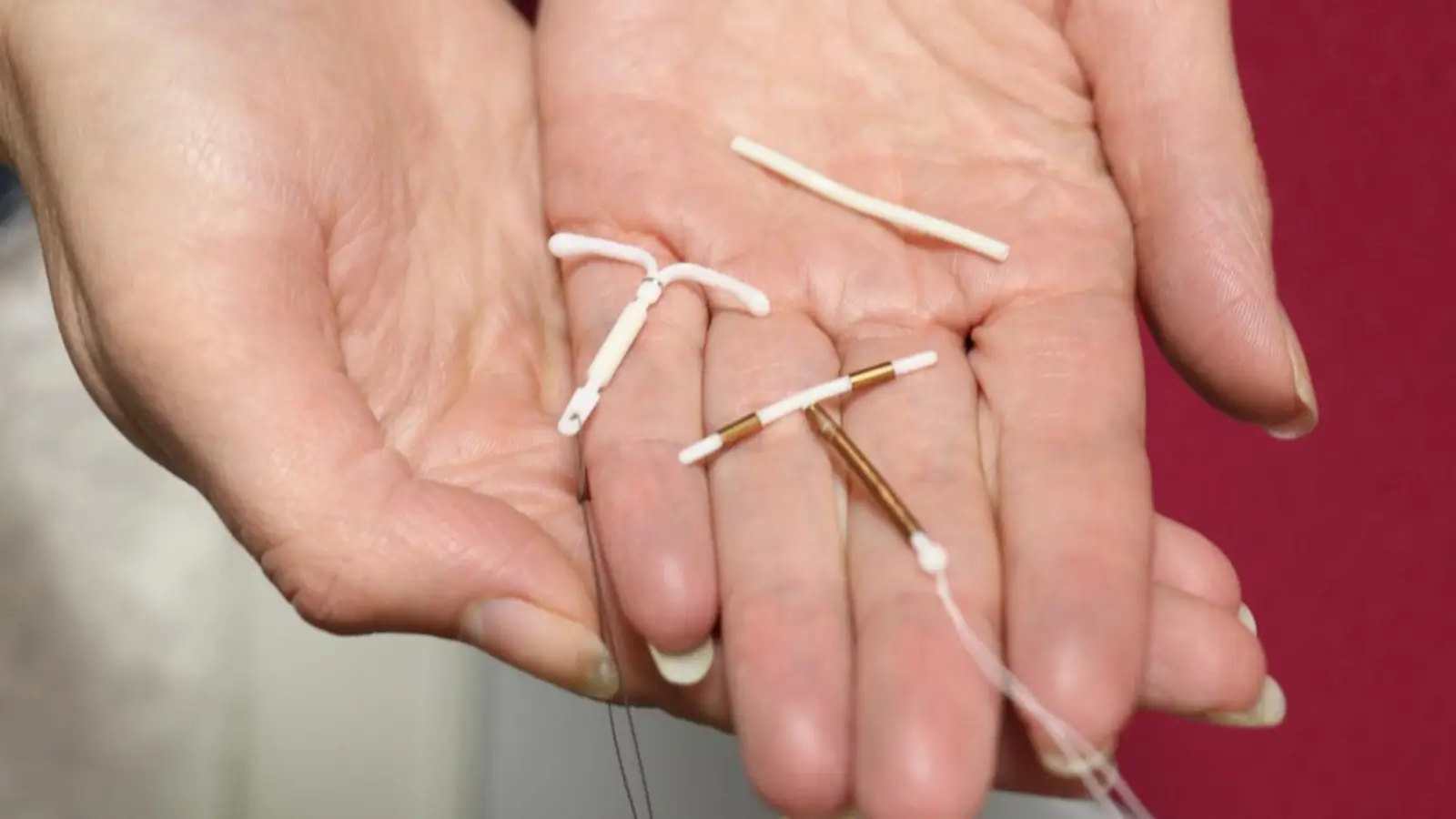Only for Licensed Professionals
Only for Licensed Professionals
.webp)
How Long Does Jaydess Last?
David Fuller
Last Updated On: June 16, 2025
In recent years, more women in the U.S. have turned to intrauterine devices (IUDs) as their preferred method of contraception, contributing significantly to the decline in unintended pregnancies. With the rise of evidence-based practices, IUDs have become more accessible, offering a safe, effective, and low-maintenance option for long-term birth control.
Among the newer hormonal IUDs, Jaydess stands out due to its smaller size and lower hormone dose. Specifically designed with comfort in mind, Jaydess is ideal for younger or nulliparous women (those who haven’t had children), providing reliable contraception and a more predictable menstrual pattern. This brings up an important question for many users: how long does Jaydess last before needing to be replaced?
In this article, we’ll dive into how long Jaydess lasts, how it works over time, and what users should consider as they approach the end of its lifespan.
Key Takeaways
- Jaydess is a hormonal IUD containing levonorgestrel that provides reliable contraceptive protection for up to three years, with over 99% efficacy during its approved duration.
- The device works by releasing levonorgestrel, which thickens cervical mucus, suppresses ovulation, and alters the uterine lining, providing highly effective pregnancy prevention.
- Jaydess’s hormone release gradually decreases over time, and its effectiveness can decline if used beyond the three-year period. Timely replacement is necessary to maintain contraceptive reliability.
- Jaydess is ideal for those seeking a short-term, low-hormone contraceptive, especially for younger individuals or those who haven’t given birth, due to its smaller size and ease of insertion.
- Compared to other IUDs, Jaydess is effective for a shorter duration than options like Mirena and Liletta, which last up to 5–8 years, making it suitable for those who prefer a shorter-term solution.
- After three years, Jaydess should be removed and replaced to ensure continuous protection. Some individuals may choose to switch methods, with options like birth control pills, implants, or other IUDs.
- Rapid return to fertility occurs after Jaydess removal, so those not planning to conceive should immediately consider another contraceptive method.
About: Operating since 2016, Med Supply Solutions is known for being one of the industry’s top and trusted suppliers of cosmetic and viscosupplementation products. If you’re looking to buy Jaydess online, contact our sales department for more information.

Approximation Based on FDA Approval and Hormone Release

Jaydess contains 13.5 mg of levonorgestrel, a progestin hormone, which is released directly into the uterus. Initially, the device releases approximately 14 micrograms per day, gradually decreasing to an average of 5 micrograms per day over the course of its three-year lifespan. This gradual decline in hormone release is factored into its approved three-year usage period.
The U.S. Food and Drug Administration (FDA) has approved Jaydess for contraceptive use for up to three years. Beyond this period, the efficacy of the device may diminish due to the reduced hormone release, making timely replacement or switching to alternative contraception methods essential to avoid any lapses in contraceptive protection.
Jaydess’s effectiveness is closely tied to its controlled hormone release, which maintains contraceptive reliability throughout its approved duration. Clinical studies have shown that the device remains over 99% effective during its three-year lifespan. However, using Jaydess beyond the recommended timeframe could increase the risk of unintended pregnancy, as hormone levels may fall below the threshold required to prevent ovulation and fertilization. This underscores the importance of understanding how Jaydess works and adhering to the recommended usage timeline.
Jaydess Longevity Compared to Other Hormonal IUDs

When selecting a hormonal intrauterine device (IUD), it’s essential to weigh factors like hormone dosage, duration of effectiveness, and overall suitability for your lifestyle. Jaydess is often compared with other popular hormonal IUDs on the market, each offering unique advantages. Here is a quick breakdown of how Jaydess stacks up:
| IUD Name | Hormone Content (Levonorgestrel) | Duration of Use | Key Features |
| Jaydess | 13.5 mg | Up to 3 years | Smallest size; ideal for younger users or those who haven’t had children; low hormone dose. |
| Kyleena | 19.5 mg | Up to 5 years | Moderate hormone release; also suitable for users who haven’t given birth. |
| Mirena | 52 mg | Up to 5 years | Higher hormone levels are often used for heavy menstrual bleeding and long-term contraception. |
| Liletta | 52 mg | Up to 8 years | A cost-effective option in some regions, similar to Mirena in terms of hormone delivery and size. |
Jaydess’s smaller size and lower hormone content make it an excellent choice for those seeking short-term, low-hormone contraception. It’s particularly beneficial for individuals sensitive to hormones or those concerned about side effects.
However, its shorter duration compared to other IUDs like Liletta or Mirena is something to consider when selecting the best contraceptive option. Comfort and tolerability remain key advantages of Jaydess, especially for users seeking a more comfortable fit.
Efficacy and Decline Over Time
Jaydess remains over 99% effective in preventing pregnancy during its approved three-year use period. Its efficacy is attributed to the consistent release of levonorgestrel, which thickens cervical mucus and inhibits sperm movement.
However, as the hormone release rate decreases over time, the contraceptive effectiveness may decline if the device is used beyond the recommended period. Therefore, adhering to the three-year replacement schedule is crucial to maintain optimal contraceptive protection.
Women nearing the end of the three-year window should consult their healthcare provider to discuss next steps. Options may include replacing Jaydess with a new device, switching to a different form of contraception, or considering a longer-lasting IUD like Mirena or Kyleena. Timely decision-making helps prevent lapses in contraceptive coverage and ensures uninterrupted reproductive planning.
How Long Does Jaydess Last Before Replacement or Switching Methods
Jaydess is designed as a temporary, long-acting contraception solution, providing reliable pregnancy prevention for up to three years. As the end of its approved usage period approaches, users must plan for the next steps to maintain continuous protection without any lapses.
- Scheduled Removal: Should be removed no later than three years after insertion, as its hormone release declines over time. Continuing to use it beyond this period may result in decreased contraceptive effectiveness, increasing the risk of unintended pregnancy. Removal is a simple procedure, typically performed in a clinic or doctor’s office.
- Immediate Replacement Option: For individuals wishing to maintain continuous contraception, they may immediately get a new Jaydess device after removing the old one. This back-to-back insertion approach ensures there is no gap in hormone delivery or contraceptive protection, which is particularly convenient for those who prefer uninterrupted contraception.
- Switching Methods: Some individuals may prefer to transition to a different form of contraception after Jaydess. Options include birth control pills, patches, implants, copper or hormonal IUDs, or even permanent solutions like tubal ligation. The decision often depends on personal preference, age, reproductive goals, and medical history.
- Quick Return to Fertility: One important consideration is the rapid return of fertility after removing Jaydess. For most individuals, ovulation resumes quickly, and pregnancy may occur soon after if they do not use another contraceptive method.
Talking with your healthcare provider ahead of your Jaydess removal date allows time to evaluate your current contraceptive needs. Whether you decide to continue with Jaydess, switch to another method, or explore options like how long does Jaydess work?, proactive planning will help you stay in control of your reproductive health.
Conclusion
Jaydess offers a reliable, low-dose hormonal contraceptive option effective for up to three years. Its design caters to individuals seeking a shorter-term IUD with potentially fewer hormonal side effects. However, to ensure continued contraceptive efficacy, it’s essential to adhere to the recommended three-year usage period and consult with a healthcare provider for timely replacement or transition to alternative methods.
Additionally, Jaydess often works best for younger individuals or those who have not given birth, thanks to its smaller size and ease of insertion. Its localized hormone delivery also means fewer systemic effects, making it a preferred choice for those sensitive to hormonal fluctuations. Still, regular follow-ups and awareness of the device’s timeline are crucial for maintaining optimal protection and reproductive health.
FAQs
1. How long does Jaydess work?
Jaydess has regulatory approval for contraceptive use for up to three years. After this period, its effectiveness may decrease due to reduced hormone release, necessitating replacement or an alternative contraceptive method.
2. Can patients use Jaydess beyond three years?
Using Jaydess beyond the recommended three years is not advised. The declining hormone release may compromise its contraceptive efficacy.
3. What happens if a patient gets Jaydess removed after three years?
Upon removal, fertility typically returns quickly. If the individual does not desire pregnancy, they must find another form of contraception immediately.
4. Is Jaydess suitable for individuals who haven’t had children?
Yes, Jaydess’s smaller size and lower hormone dose make it a suitable option for individuals who haven’t had children and are seeking effective, long-term contraception.
References
Nelson A, Mph NM. New developments in intrauterine device use: focus on the US. Open Access Journal of Contraception. 2016;Volume 7:127-141. doi:10.2147/oajc.s85755
Curtis KM, Jatlaoui TC, Tepper NK, et al. U.S. Selected Practice Recommendations for Contraceptive Use, 2016. MMWR Recommendations and Reports. 2016;65(4):1-66. doi:10.15585/mmwr.rr6504a1
Fortney JA, Feldblum PJ, Raymond EG. Intrauterine devices. The optimal long-term contraceptive method?. J Reprod Med. 1999;44(3):269-274.
Products
Cart
Log In
Newsletter
Subscribe for exclusive offers and updates on new arrivals
Share feedback at:
Working Hours
MON - SUN 9AM to 6PM EST
The Most Popular Brands
Med Supply Solutions
Support
Secure checkout is guaranteed with full adherence to PCI DSS payment standards.
Products listed here are guaranteed authentic and manufacturer-sourced.
Pay easily with trusted providers


*Google and Apple Pay are currently only available via a direct link provided by your account manager.
Copyright 2025. Med Supply Solutions